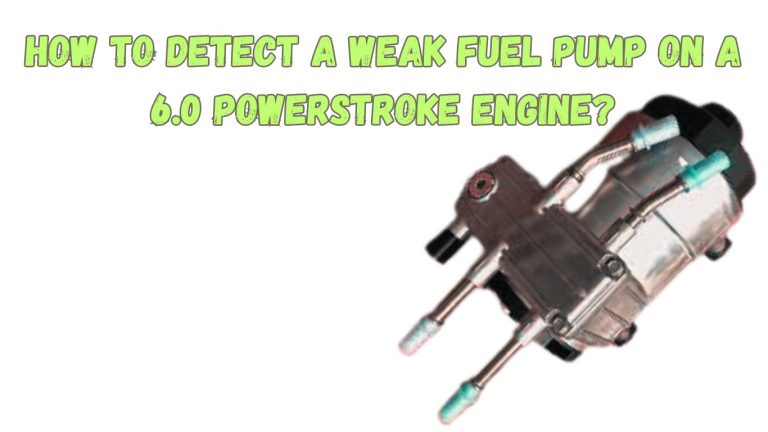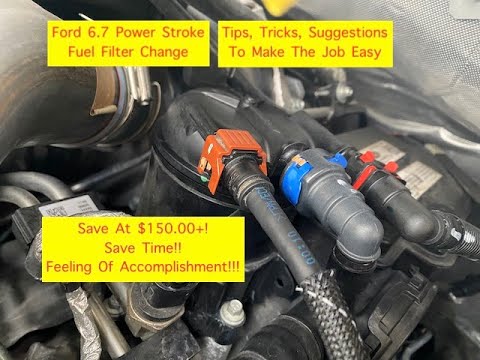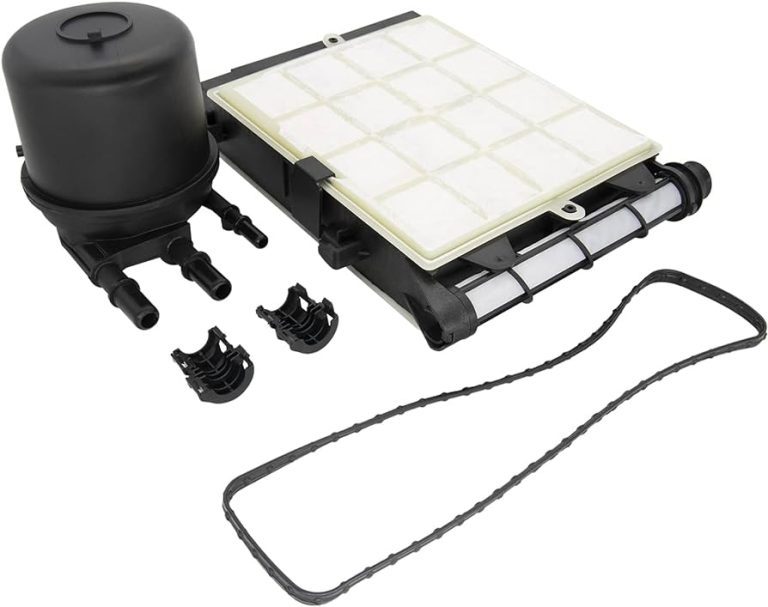Symptoms Of A 5.3 Vortec Cracked Cylinder Head (Explained)
As a proud owner of a 5.3 Vortec engine, understanding the potential issues that can arise is essential for maintaining the longevity and performance of your vehicle. One critical problem that can significantly impact your engine’s functionality is a cracked cylinder head. Identifying the symptoms associated with this issue is of utmost importance, and that’s precisely what this article aims to enlighten you about.
In this informative guide, we delve into the world of the 5.3 Vortec engine and shed light on the unmistakable symptoms that may indicate a cracked cylinder head. By being able to recognize these warning signs, you can take swift action to prevent further damage, avoid costly repairs, and ultimately ensure your engine’s smooth operation.
Whether you’re an automotive enthusiast or a concerned vehicle owner, this article serves as a valuable resource, providing insights into the symptoms and implications of a cracked cylinder head specific to the 5.3 Vortec engine. By understanding the significance of early detection and intervention, you can safeguard your engine’s health and make informed decisions regarding maintenance and repairs.
Join us as we explore the telltale symptoms, their relevance to 5.3 Vortec engine owners, and the overall purpose of this article—to equip you with the knowledge necessary to identify and address a cracked cylinder head promptly. Let’s dive into the intricacies of this issue and empower you to keep your 5.3 Vortec engine running smoothly for years to come.
Understanding the 5.3 Vortec Engine and Cylinder Head
Brief Overview of the 5.3 Vortec Engine
The 5.3 Vortec engine is a popular and powerful engine option developed by General Motors. It belongs to the Vortec family of engines known for their efficiency, performance, and reliability. The 5.3 Vortec engine is commonly found in trucks, SUVs, and other vehicles where power and towing capabilities are desired.
This engine boasts a displacement of 5.3 liters, featuring eight cylinders arranged in a V-configuration. It utilizes advanced technologies such as electronic fuel injection, variable valve timing, and cylinder deactivation to optimize fuel efficiency and power delivery. With its robust design and ample torque, the 5.3 Vortec engine offers an impressive balance between performance and fuel economy.
Role and Significance of the Cylinder Head in the Engine’s Functionality
The cylinder head is a vital component of any internal combustion engine, including the 5.3 Vortec engine. Positioned on top of the engine block, the cylinder head contains the combustion chambers where the fuel-air mixture is ignited, and the power stroke occurs.
One of the primary functions of the cylinder head is to seal the combustion chambers, ensuring that the combustion process remains contained within the designated area. It houses the intake and exhaust ports, allowing the intake of air-fuel mixture and the expulsion of exhaust gases. Additionally, the cylinder head houses critical components like valves, valve springs, and the camshaft, which regulate the intake and exhaust processes.
The cylinder head plays a crucial role in maintaining proper compression ratios, efficient combustion, and optimal airflow within the engine. It is subjected to high temperatures and pressures, making it susceptible to potential issues such as cracks or leaks. Understanding the significance of the cylinder head’s role in the engine’s functionality is essential for comprehending the implications of a cracked cylinder head and the associated symptoms that may arise.
Causes of Cracked Cylinder Heads
Common Factors Leading to Cylinder Head Cracks
Cylinder head cracks can occur due to various factors, and understanding these causes is crucial for diagnosing and addressing the issue effectively. Let’s explore some of the common factors that can lead to cracked cylinder heads in the 5.3 Vortec engine.
Impact of Overheating
Overheating is a major contributor to cylinder head cracks. When an engine runs at excessively high temperatures, the cylinder head expands, and if it doesn’t have adequate cooling or is subjected to prolonged overheating, it can develop stress points that eventually lead to cracks. Common causes of overheating include:
1. Insufficient coolant levels or coolant circulation issues.
2. Malfunctioning thermostat or cooling system components.
3. Faulty radiator or cooling fan.
Stress and Pressure
The cylinder head undergoes significant stress and pressure during the engine’s operation, and certain conditions can exacerbate these forces, increasing the risk of cracks. Factors that contribute to stress and pressure on the cylinder head include:
1. Engine modifications or upgrades that increase power output, placing additional strain on the cylinder head.
2. Improper installation of components, such as incorrect torque specifications or uneven tightening of cylinder head bolts.
3. Engine detonation or pre-ignition, causing abnormal combustion pressures.
Manufacturing Defects
Although rare, manufacturing defects can also lead to cylinder head cracks. These defects may include casting flaws, weak points in the material, or improper machining processes during production. While manufacturers strive for high-quality control, it’s possible for defects to occur, which may manifest as cracks under the engine’s operating conditions.
Understanding these common factors that contribute to cracked cylinder heads in the 5.3 Vortec engine provides insights into the potential causes behind this issue. In the next section, we will explore the symptoms associated with a cracked cylinder head, which will help you identify the problem early and take appropriate measures to address it effectively.
Identifying Symptoms of a Cracked Cylinder Head
When it comes to a cracked cylinder head in the 5.3 Vortec engine, early detection is crucial to prevent further damage and costly repairs. By recognizing the symptoms associated with a cracked cylinder head, you can take prompt action to address the issue. Let’s explore the external and internal signs that may indicate a cracked cylinder head in your 5.3 Vortec engine.
External Signs
1. Coolant Leaks:One of the primary external indicators of a cracked cylinder head is the presence of coolant leaks. A cracked cylinder head can cause coolant to seep out and become visible near the engine block or cylinder head area. Look for signs of coolant pooling, dripping, or a sweet-smelling odor around the engine.
2. Engine Overheating:Cracks in the cylinder head can disrupt the engine’s cooling system, leading to inadequate heat dissipation and eventual overheating. If you notice frequent instances of engine overheating, especially accompanied by coolant loss, it could be an indication of a cracked cylinder head.
3. Visible Cracks or Damage on the Cylinder Head:visible cracks or damage may be present on the external surface of the cylinder head. Inspect the cylinder head carefully for any visible cracks, fractures, or physical damage. While this symptom may not always be evident, it is worth checking during a visual inspection.
Internal Signs
1. Loss of Compression:A cracked cylinder head can compromise the seal between the combustion chamber and the engine block, resulting in a loss of compression. This can cause a decrease in engine power, rough idling, or misfiring. If you notice a significant drop in engine performance or experience difficulty starting the engine, it may indicate a cracked cylinder head.
2. Milky or Discolored Oil:Inspect the engine oil dipstick or oil filler cap for any signs of milky or discolored oil. A cracked cylinder head can allow coolant to mix with the oil, resulting in a frothy or milky appearance. This indicates coolant contamination, which points towards a potential issue with the cylinder head.
3. White Smoke from Exhaust:If your 5.3 Vortec engine emits white smoke from the exhaust, it could be a sign of a cracked cylinder head. This occurs when coolant enters the combustion chamber and is burned along with the fuel, producing white smoke. Pay attention to excessive smoke, especially during acceleration or under load.
By being vigilant and recognizing these symptoms, you can identify a cracked cylinder head in your 5.3 Vortec engine. In the next section, we will discuss diagnostic techniques and tools that can help confirm the presence of a cracked cylinder head and guide you in making informed decisions for repairs or maintenance.
Diagnostic Techniques and Tools
When faced with the possibility of a cracked cylinder head in your 5.3 Vortec engine, employing appropriate diagnostic techniques and tools can help confirm the issue and guide you towards the necessary repairs. Let’s explore some methods to diagnose a cracked cylinder head and introduce relevant tools and equipment for inspection.
Visual Inspection
A visual inspection is the first step in diagnosing a cracked cylinder head. Inspect the external surface of the cylinder head for visible cracks, fractures, or signs of damage. Use a flashlight and a mirror if necessary to examine hard-to-reach areas. Look for coolant leaks, indications of coolant seepage, or any abnormal physical conditions on the cylinder head.
Pressure Test
A pressure test is a commonly used method to detect leaks and cracks in the cylinder head. It involves pressurizing the cooling system with a specialized tool to simulate operating conditions. By monitoring pressure fluctuations or loss, you can determine if there are any leaks present in the cylinder head or related components. A pressure tester kit, including a pressure pump and appropriate adapters, is necessary for conducting this test.
Cylinder Leakage Test
A cylinder leakage test helps assess the integrity of the combustion chamber and the cylinder head. This test involves introducing compressed air into each cylinder while monitoring the pressure drop. If there is a significant pressure drop, it indicates a leak in the cylinder head, such as a cracked or damaged surface. A cylinder leakage tester, which includes a pressure gauge, hoses, and fittings, is required for performing this test.
Coolant System Pressure Test
Performing a coolant system pressure test can help identify external leaks or cracks in the cylinder head that may be causing coolant loss. This test involves pressurizing the cooling system and monitoring the pressure gauge for any drop or fluctuations. A coolant system pressure tester is used for this purpose and typically includes adapters specific to the 5.3 Vortec engine.
Borescope Inspection
A borescope is a useful tool for examining the internal surfaces of the combustion chambers and the cylinder head without disassembly. It consists of a flexible camera probe that can be inserted through an access point, such as the spark plug hole, to inspect the condition of the cylinder head’s interior. By visualizing the areas that are typically inaccessible, you can identify cracks or other issues.
These diagnostic techniques and tools are valuable resources for confirming the presence of a cracked cylinder head in your 5.3 Vortec engine. If you’re uncertain or inexperienced with these procedures, it’s recommended to seek professional assistance to ensure accurate diagnosis and appropriate repairs.
Implications of Ignoring a Cracked Cylinder Head
Ignoring a cracked cylinder head in your 5.3 Vortec engine can have significant consequences, both for engine performance and safety. Understanding the potential risks and complications associated with this issue is crucial in order to make informed decisions regarding repairs. Let’s explore the implications of ignoring a cracked cylinder head.
Potential Risks and Complications
1. Engine Damage: A cracked cylinder head can lead to coolant and oil mixing, compromising lubrication and cooling functions. This can result in accelerated wear and tear on engine components, potentially leading to more severe engine damage. Ignoring the issue can exacerbate the problem, potentially requiring extensive repairs or even engine replacement.
2. Reduced Engine Performance: A cracked cylinder head can affect the engine’s combustion efficiency, resulting in reduced power output, decreased fuel economy, and overall poor engine performance. Ignoring the problem can lead to further deterioration of engine performance over time, negatively impacting your driving experience.
3. Safety Concerns: Ignoring a cracked cylinder head can pose safety risks. Overheating caused by coolant leakage can result in engine failures and unexpected breakdowns, potentially leaving you stranded on the road. Additionally, compromised engine performance can impact vehicle handling, braking, and acceleration, compromising overall safety on the road.
Long-Term Effects on Engine Performance and Safety
Continued operation of your 5.3 Vortec engine with a cracked cylinder head can lead to long-term effects that worsen over time:
1. Increased Repair Costs: Ignoring a cracked cylinder head can escalate the issue, potentially causing additional damage to engine components. This can result in higher repair costs as the damage spreads, requiring more extensive repairs or even engine replacement.
2. Engine Failure: A cracked cylinder head, if left unaddressed, can eventually lead to catastrophic engine failure. This not only poses financial burdens but also disrupts your daily routine and may require significant time and effort to rectify.
3. Safety Hazards: The compromised engine performance and potential for sudden breakdowns due to a cracked cylinder head can compromise your safety and the safety of others on the road. It’s essential to address the issue promptly to maintain reliable and safe operation of your vehicle.
Addressing a Cracked Cylinder Head
When faced with a cracked cylinder head in your 5.3 Vortec engine, it’s important to take appropriate action to address the issue promptly. In this section, we will discuss best practices to prevent cylinder head cracks and recommend regular maintenance routines for the 5.3 Vortec engine to minimize the risk of encountering this problem.
Best Practices to Prevent Cylinder Head Cracks
1. Maintain Proper Cooling System Functionality: A well-functioning cooling system is crucial for preventing cylinder head cracks. Regularly check coolant levels, inspect for leaks, and ensure the cooling system components, such as the radiator, water pump, and thermostat, are in good working condition. Regular coolant flushes according to the manufacturer’s recommendations can help prevent overheating and reduce the risk of cracks.
2. Follow Manufacturer’s Torque Specifications: During engine assembly or any repair work involving the cylinder head, it is essential to follow the manufacturer’s recommended torque specifications for cylinder head bolts. Proper torque ensures even distribution of clamping force, reducing the risk of stress concentrations and potential cracks.
3. Avoid Engine Overheating: Preventing engine overheating is crucial for preserving the integrity of the cylinder head. Avoid prolonged periods of high engine temperature, monitor coolant levels regularly, and address any cooling system issues promptly to prevent overheating-related cylinder head cracks.
Regular Maintenance Routines for the 5.3 Vortec Engine
1. Regular Oil Changes: Follow the manufacturer’s recommended oil change intervals and use the appropriate oil viscosity for your 5.3 Vortec engine. Regular oil changes help maintain proper lubrication, reducing friction and wear on engine components.
2. Scheduled Inspections: Regularly inspect the engine for any signs of coolant leaks, oil contamination, or visible damage to the cylinder head. Catching potential issues early can prevent them from developing into major problems.
3. Professional Maintenance and Servicing: Regularly schedule professional maintenance and servicing for your 5.3 Vortec engine. This ensures that qualified technicians can inspect the engine, address any potential concerns, and perform necessary repairs or replacements.
4. Use High-Quality Parts: When replacing components in the engine, including the cylinder head, opt for high-quality parts from reputable manufacturers. This helps ensure the longevity and reliability of the engine.
By implementing these best practices and adhering to regular maintenance routines, you can minimize the risk of encountering a cracked cylinder head in your 5.3 Vortec engine. However, if you do suspect a cracked cylinder head, it is advisable to consult with a qualified mechanic or engine specialist to assess the situation and determine the most appropriate course of action.
Conclusion
In this article, we have explored the key aspects related to the 5.3 Vortec engine and its cylinder head. We discussed the role and significance of the cylinder head in the engine’s functionality and identified the common causes of cracked cylinder heads, including overheating, stress, and manufacturing defects.
Staying vigilant and proactive about your engine’s condition is crucial. Regular inspections, prompt action upon detecting symptoms, and adherence to maintenance routines can help prevent and address a cracked cylinder head. We encourage you to stay informed, consult professionals when needed, and prioritize the health and longevity of your 5.3 Vortec engine.



